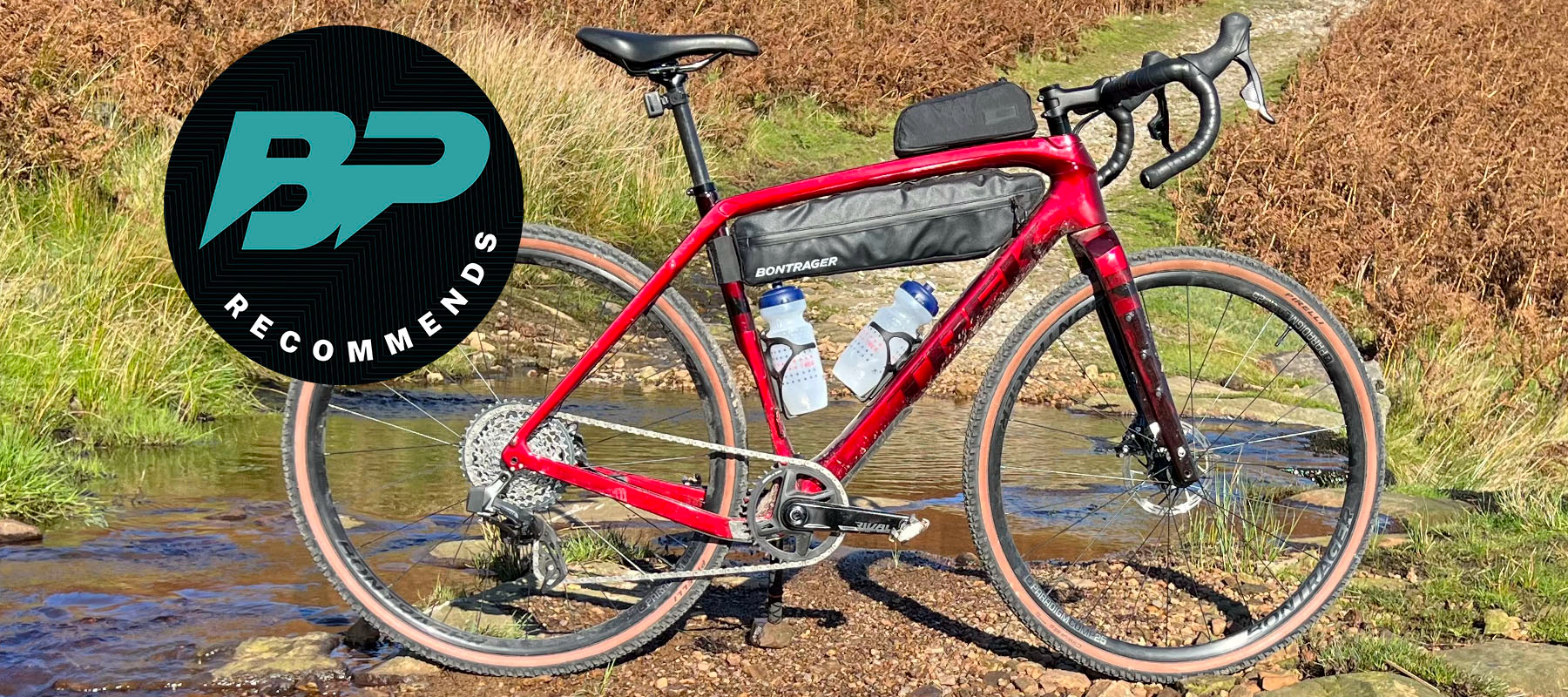Bike Perfect Verdict
Genuinely ride improving IsoPulse frame tech with unique handling that’s happy from road rides to rough bikepacking, plus tons of mount points and a sweet spot spec list make the Checkpoint SL 6 an excellent, easy yet efficient choice for whatever you want gravel to be.
Pros
- +
IsoPulse Decoupler is a significant ride smoother
- +
Well balanced road or rough handling
- +
Efficient speed on all surfaces
- +
SL 6 model is a real performance for price sweet spot
Cons
- -
Saddle is a bit squishy on longer rides
- -
Many mounts mean slightly more mass
- -
Controls go through the headset
- -
Non removable front mech tab
- -
Rough rear hub
Why trust BikePerfect
Trek’s second generation Checkpoint gravel bike has a unique, ride smoothing scissor frame design, confidently controlled handling, internal storage plus lots of clever external cargo fittings including custom bags. The SL 6 looks like a sweet spot in terms of performance for price too. I have been getting the multi-surface miles in to see how the Checkpoint checks out as an all-round race and adventure candidate.
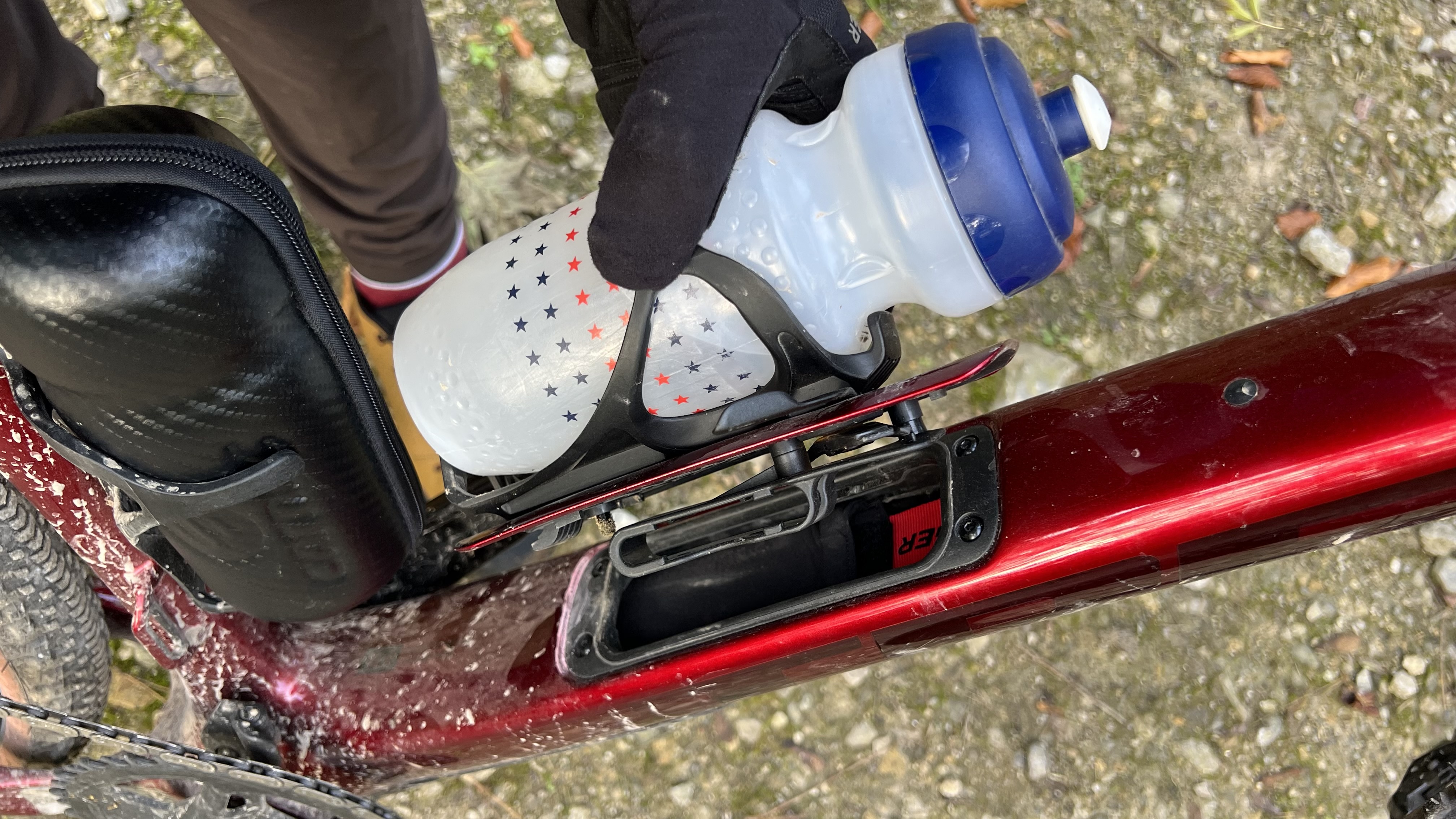
Design and geometry
The first impression of the Checkpoint SL is what a chunky frame it is. The massive downtube leaves plenty of storage space under the latched hatch though and together with the broad seat tube means full width support of the oversized T47 bottom bracket. The broad rectangular top tube gives plenty of real estate for bolt on bags above and below it. It also hugs round the head tube to create a deep brow below the upper segment that turns with the bars and acts as entry point to the internal control routing. The deeply dropped asymmetric stays are chunky too and even the seat stays are sturdy pieces by modern ‘flexy and friendly’ standards.
Normally this would read like a classic recipe for a horribly rigid ride, but hiding under the pop out servicing panels at the tope tube/seat stay/seat tube junction is a skewering pivot axle. This ‘IsoSpeed Decoupler’ lets the seat tube flex back and forth above and below (where the tube is dramatically scooped out) the axis of the pivot for an impressively smooth ride in the saddle but a very stiff feel underfoot. Specific variations of the theme have been used successfully right across Trek’s road, CX, MTB and gravel ranges for a while too.
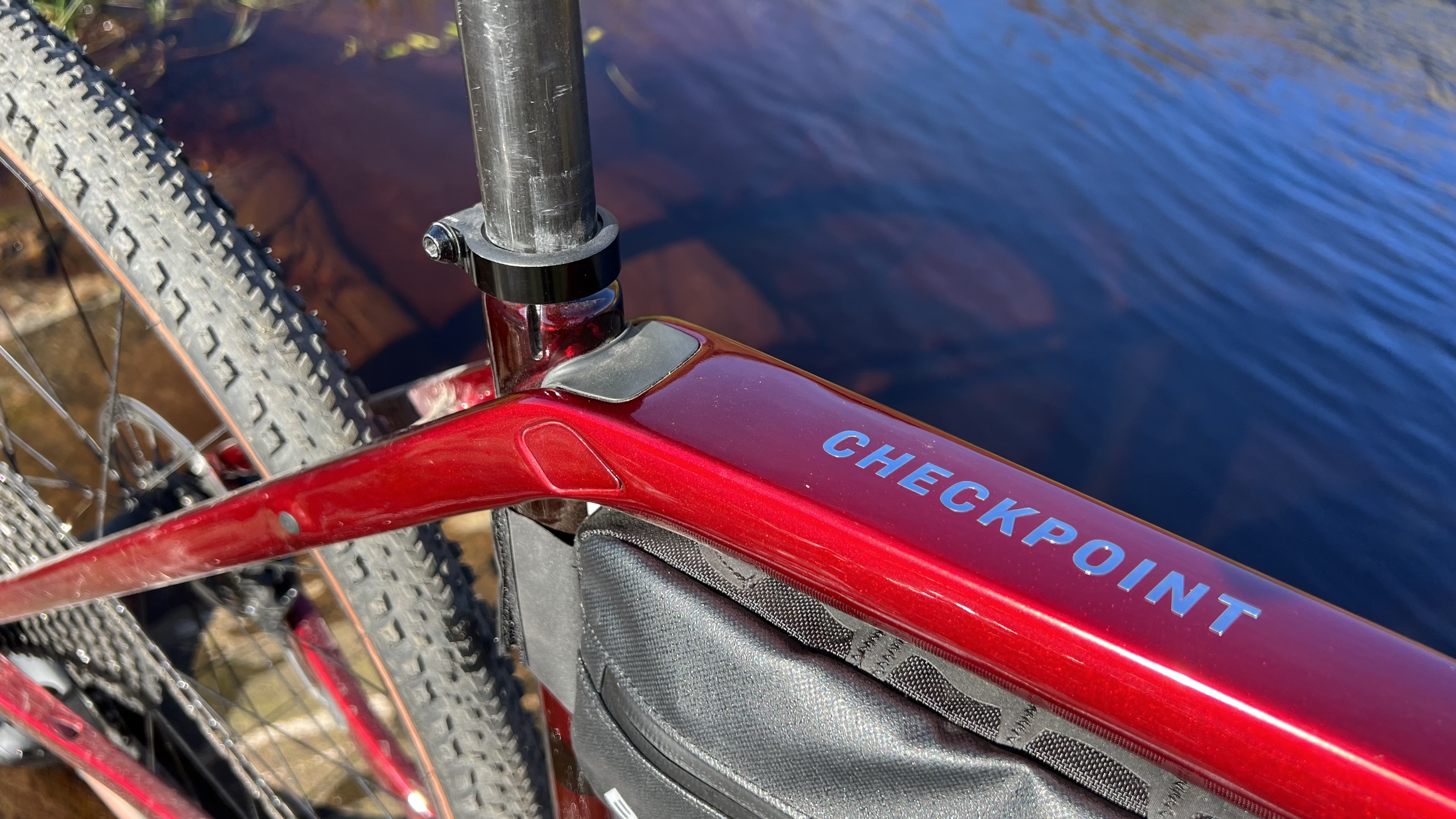
As well as the internal space and top tube mounts, there are four bottle cage positions, hidden fender mounts, less hidden frame mounts and the mandatory triple holes down each carbon fork leg for whatever you want to bolt/strap on. There’s a steel scuff plate behind the chainring (maximum size 46T) plastic armor on the belly and an adjustable chain keeper. There’s ample space for 700 x 45mm or 650 x 52mm (27.5 x 2.1in) tires in frame and fork too. The only glitch is the redundant but irremovable front mech mount sticking awkwardly out from the seat tube.
OCLV 500 is Trek’s mid price, mid weight carbon composite option with a claimed 56cm painted frame weight of 1480g and a fork weight of 501g. This makes it heavier than the Checkpoint SLR chassis, but that’s not available separately, while the SL is $2,399 / £2,500 / €2,699
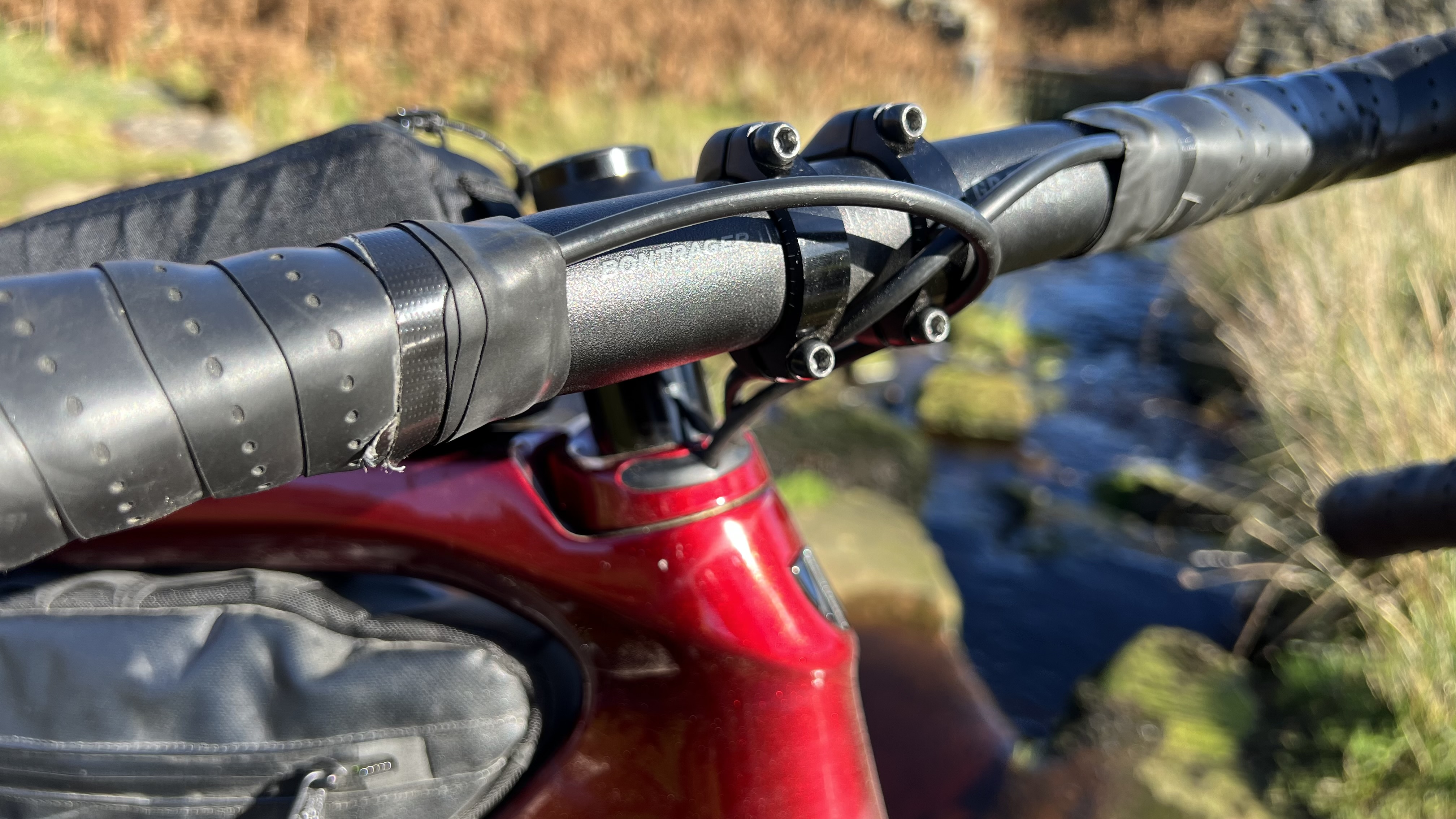
Components and build
As the model name suggests, the SL6 gets SRAM’s AXS wireless gear set up. It’s the lower/mid tier Rival group with an alloy crank (the SL7 AXS gets Force and carbon wheels) with a 40T chainring matched to a 10-44 tooth XPLR cassette. The bottom bracket is the latest T47 standard. Shifters and hydraulic disc brakes are Rival too, with 160mm rotors for decent stopping power.
Bontrager Paradigm Comp wheels use alloy 25mm wide rims with hard plastic tubeless sealing strips for long term durability. Stock bikes come with Bontrager GR1 Team Issue tires but my sample bike was running Pirelli Cinturato Gravel M Classic tires in the same 40mm width. The Bontrager Switch thru-axle has a removable lever with 4 and 5mm Allen keys in the tip too. The non-adjustable rear hub bearings were sounding super rough and wobbling within a few days of riding though.
Bontrager supply all the finishing kit including a carbon seat post and a particularly squishy saddle. All the contact points are size specific with different crank lengths from 165mm to 175mm, 38 - 46cm bars and 70 - 100mm stems depending on frame size. You get a wider saddle on 49 and 52cm bikes as well.
Complete bike weight of our 56cm test bike with bottle cages and internal storage sleeves but no pedals was 9.3kg. The price compares well to other carbon gravel bikes with internal storage like the Specialized Diverge and Santa Cruz Stigmata too although It’s worth noting that the same bike (identical apart from a moss green finish) has just appeared on the Trek UK website for only £4,300 and I imagine other territories will update soon.
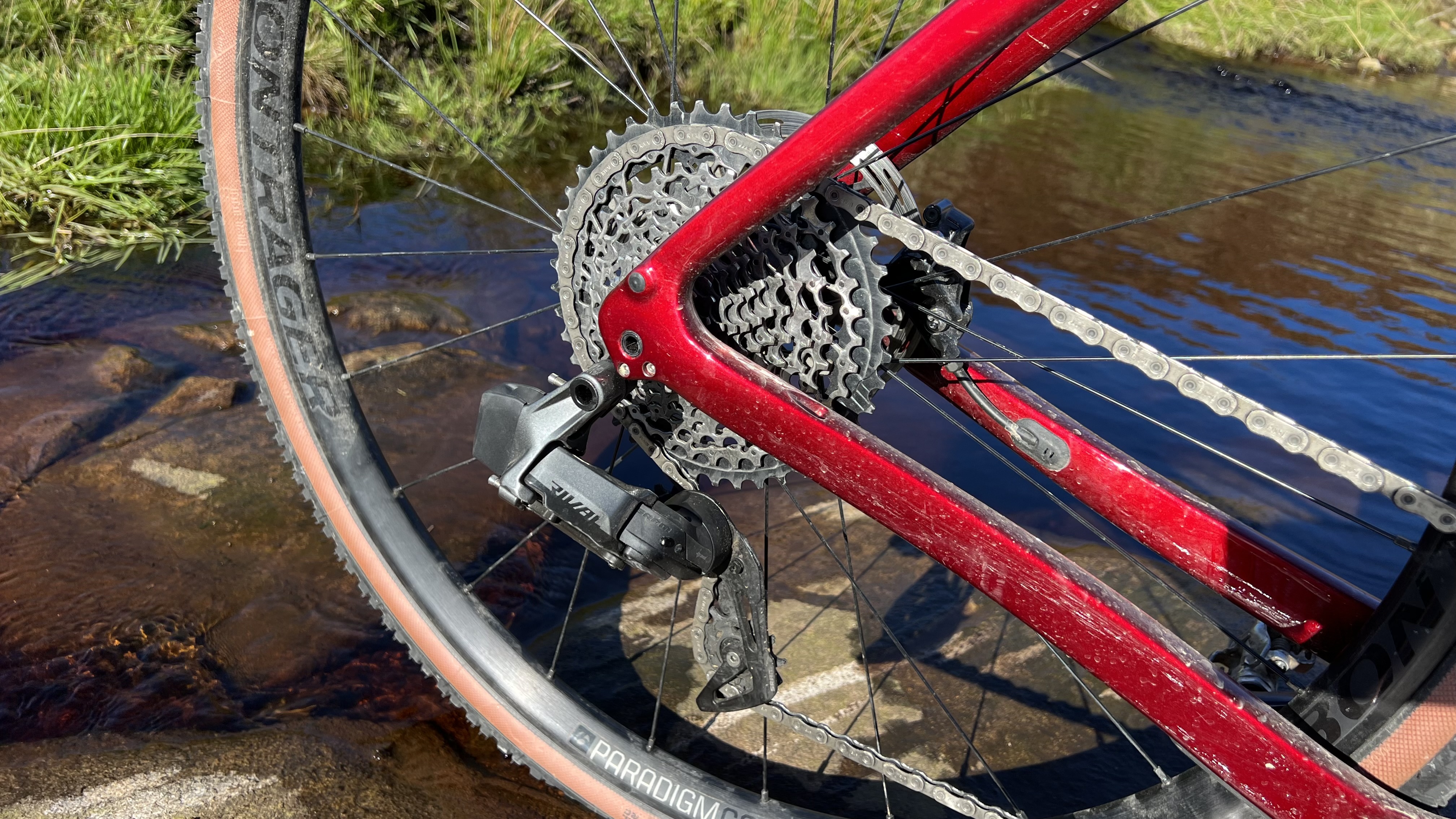
Ride, handling and performance
There’s two main things to talk about with the Checkpoint that are unique to this bike – the IsoSpeed Decoupler and the ‘progressive’ handling. It’s certainly not unique in saying it has ‘progressive’ handling but Trek do it different. Rather than slackening the head angle in an MTB style, they’ve kept it road bike steep (72.2 degrees on my 56cm test bike) but reduced the rake (angle between a vertical line through the centre of the hub/tire contact patch versus the hub and steering centers
– aka headset – of the frame) of the fork. In one sense this makes it more responsive through the bars and Trek have amplified that by using a shorter stem than normal. However, the smaller rake means a longer trail figure (distance between that vertical line through the hub centre/tire contact patch). That means the front wheel ‘castors’ more strongly so it wants to stay straight and the bike needs more effort to get it to change direction. Trek have also lengthened the reach by 20mm on average and added 10mm to the rear centre so you’re getting significantly more stability that way too.
Overall then you’re getting a more resolute, ‘I’ll keep going straight rather than freaking out and tripping up’ character than average on the Checkpoint through rough, rooty or loose rock situations – while still having a light and sensitive steering feel. Its definitely subtly different to something like the Santa Cruz Stigmata where the head angle has been slackened dramatically MTB style. That manifests in a keener, more reactive feel through the bars on Checkpoint on climbs and in slow speed situations. That’s emphasised by an already slack seat angle that gets even slacker as the seat post bows backwards under high torque / low revs effort so you’re balancing between alert accuracy and popping the front wheel up and losing control at extremes. It’s not quite as planted through fast, drifting turns as the Stigmata (my current ‘gravel speedway’ benchmark) as you can provoke it to twitch and tweak at the limit. It feels less sluggish and barge like on the road than a slacked out bike though. The deeper than average (for gravel at least) drop on the bars and fast rolling tires also gives a more ‘all-road’ vibe. So if you’re likely to run fast tires or even invest in a separate set of road wheels rather than fit a dropper post and knobbly rubber, then the Checkpoint is a really effective and enjoyable balance.
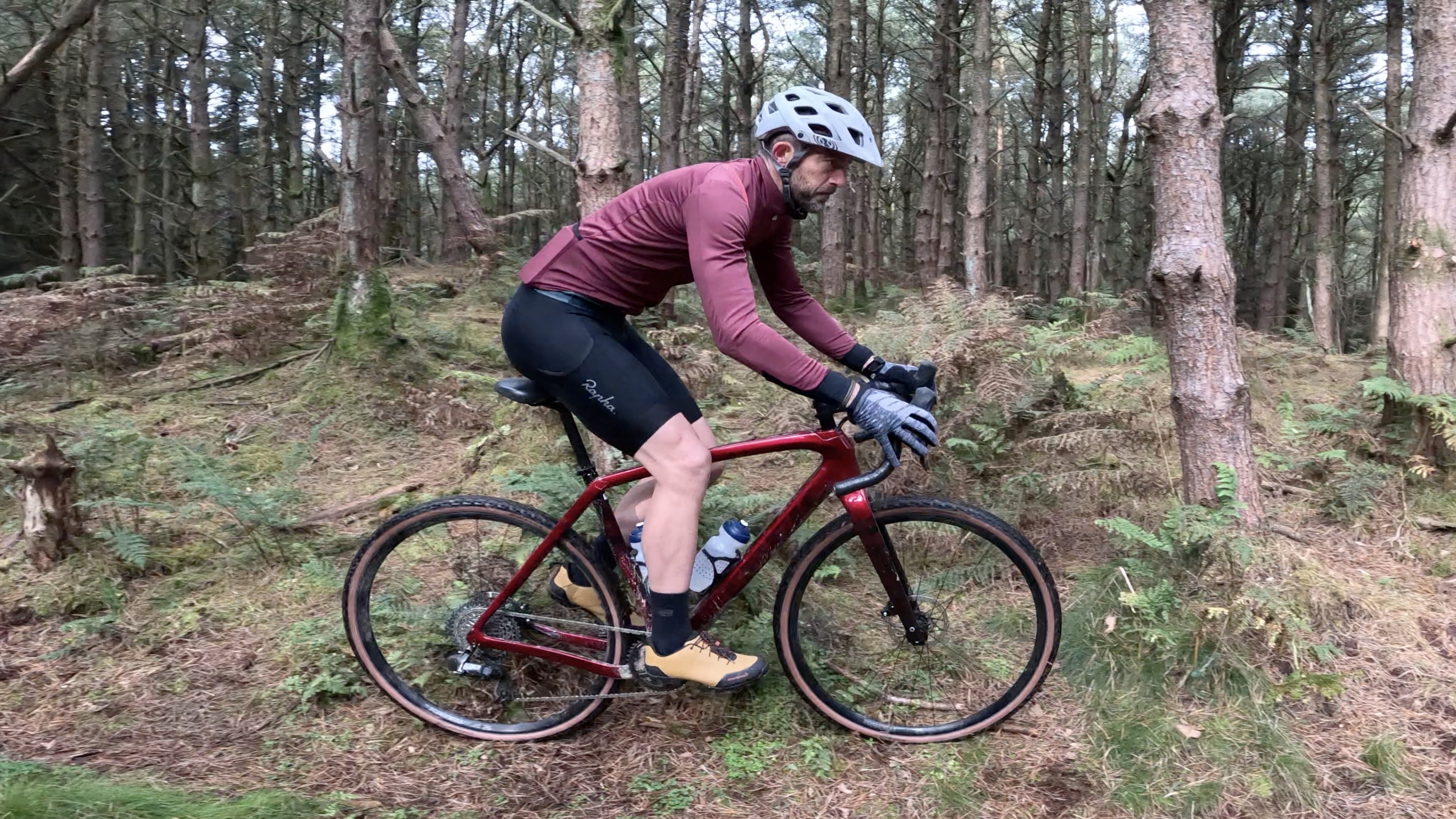
That’s not to say it’s not very smooth and capable on rougher terrain though because the IsoSpeed tech really does work well. Not as obviously as a suspension seatpost, but in a more organic ‘smoothes the sharp edges and slap sting off roots and rocks’ sense that feels a lot like running much bigger tires than you are in terms of both comfort and traction. Fore and aft flux means it can feel a little ‘rounded off’ when pedaling hard in the saddle, but stand up and there’s clearly a very solid and purposeful drive delivery to the back wheel. The back wheel still carves and cuts cleanly rather than writhing across it’s axis if you’re pushing hard through turns or off cambers too.
While Trek have abandoned their front end IsoSpeed tech, the fork is similarly smooth and forgiving without slurring tracking so there’s no ‘game of two halves’ mismatch to unsettle the handling. The Bontrager Elite Gravel bars have rubber padding embedded in their top surface for a bit of extra comfort and the squidgy saddle plays it’s part in isolating the trail. The fact it’s still an active tracking and laterally stiff bike is obvious and welcome when you’re tackling singletrack or sketchy descents while loaded up for a few days of bikepacking. Even a full size seatpack rammed with a tent, stove and a couple of campsite tinnies didn’t set up any weird harmonics or wriggle at speed and knowing the top tube bags are physically bolted into place adds mental and mechanical confidence too.
The 160mm brake rotors both ends and 44 tooth largest cog on the XPLR cassette are welcome when loaded too and as usual the Rival AXS set up was totally trouble free through an extensive test period. Apart from the premature death of the bearings in the rear hub the Bontrager wheels seem tough, but a lighter set would definitely pep up the dutiful rather than dynamic accelerating character of the SL 6.
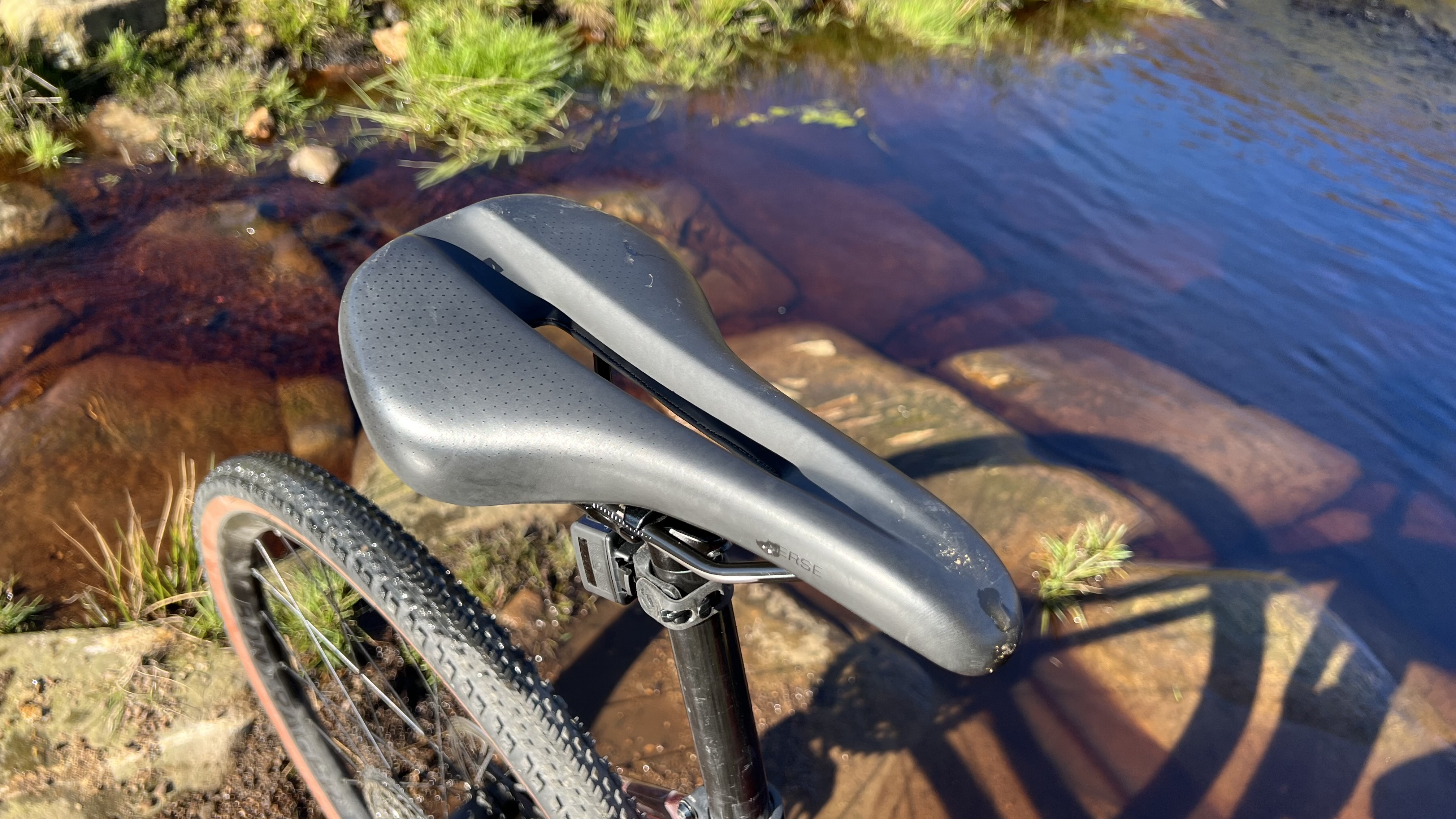
Verdict
Trek like doing things differently and there’s definitely a lot of distinctive features to the Checkpoint. The result never feels weird though, just a great balance of smoothness, assured but not dull handling and efficient yet comfortable speed across a wide range of surfaces. It’s ready to have pretty much any accessory from dedicated bags to commuting fenders bolted on too.
While you can go lighter with the SLR frames, fancier with the various pricier SL models, or cheaper with the alloy ALR models, the SL 6 is a definite sweet spot pick. It's full of wireless functionality, carbon frame and proportionately sized componentry without paying any more than you need to. And if you can invest later it’s definitely a frame worth upgrading not least because it’s blend of 'feels good on the road' and when loaded up for wilderness bikepacking (as well as everything in between) makes it very versatile.
Test conditions
- Surface: Gravel, road, roots, rocks, mud, sand, grass singletrack, mixed farm tracks
- Trails: Moorland tracks, forest fire roads, actual roads, rocky rural roads, natural woodland singletrack.
- Weather: Dry to drizzle. (5 – 15 C)
Tech specs: Trek Checkpoint SL 6 AXS
- Discipline: Gravel Race/Adventure
- Price: $4,299 / £4,450 / €4,799
- Head angle: 67.5 degrees
- Frame material: 500 Series OCLV carbon fibre
- Fork: Trek Checkpoint, full carbon
- Sizes: 49, 52, 54, 56 (tested), 58, 61cm
- Weight: 9.3kg (56cm model)
- Wheel size: 700c
- Chainset: SRAM Rival, 40T, 172.5mm chainset with DUB Wide T47 bottom bracket.
- Rear mech: SRAM Rival XPLR eTap AXS wireless
- Shifter: SRAM Rival eTap AXS, 12-speed wireless
- Cassette: SRAM XG-1251, 10-44T, 12-speed
- Brakes: SRAM Rival hydraulic disc with SRAM Paceline 160mm rotors.
- Tires: Pirelli Cinturato Gravel M Classic 700 x 40mm tires
- Wheels: Bontrager Paradigm Comp 25 alloy
- Bars: Bontrager Elite Gravel, 31.8 x 42 cm
- Stem: Bontrager Pro, 31.8 mm, Blendr-compatible, 7-degree, 90 mm length
- Seatpost: Bontrager carbon, 27.2 mm
- Saddle: Bontrager Verse Comp, steel rails, 145 mm width

Guy Kesteven has been working on Bike Perfect since its launch in 2019. He started writing and testing for bike mags in 1996. Since then he’s written several million words about several thousand test bikes and a ridiculous amount of riding gear. He’s also penned a handful of bike-related books and he reviews MTBs over on YouTube.
Current rides: Cervelo ZFS-5, Specialized Chisel, custom Nicolai enduro tandem, Landescape/Swallow custom gravel tandem
Height: 180cm
Weight: 69kg
